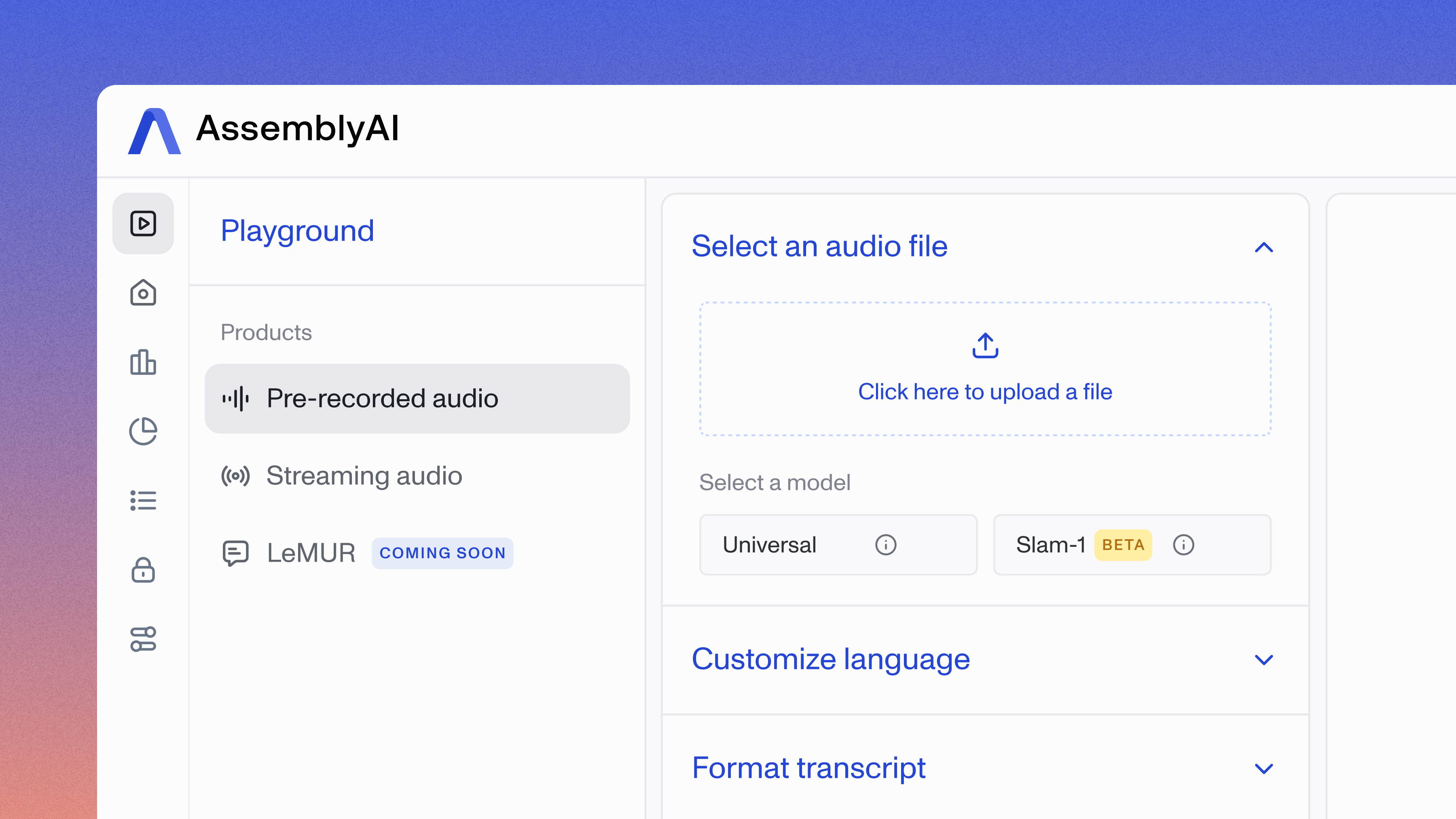Best AI playgrounds in 2025
If you’re looking for ways to play around with AI in 2025, these are the best AI playgrounds to try.

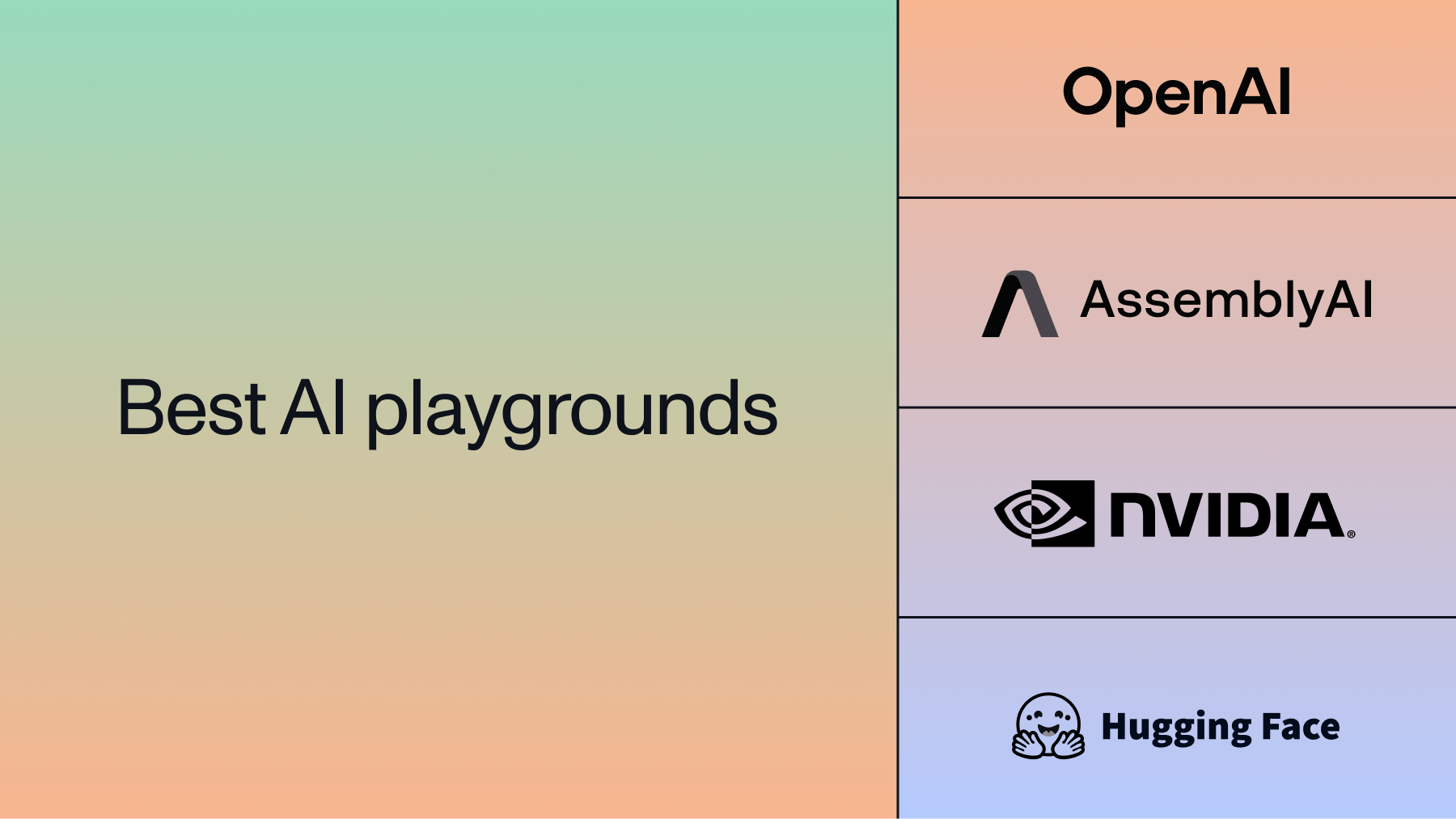

The next generation of AI research and technology is here—and everyone is talking about it, thanks in large part to popular AI applications like ChatGPT and Stable Diffusion text-to-image generation.
Why are these AI-powered tools so popular? Partly, because they empower users to play around with the technology in an accessible way and to generate fun, thought-provoking, unique, interesting, and useful outputs.
For example, users are turning to AI to automatically generate poems from a simple text prompt, create music from text, create award-worthy artwork from text prompts, derive marketing and sales insights from large bodies of audio and text data, and much more.
If you're looking for additional ways to play around with AI in 2025, these are the best AI playgrounds to try. We'll show you what they are, which platforms deliver the most value, and how to choose the right one for your needs.
What are AI playgrounds?
An AI playground is an interactive, web-based interface that lets you experiment with AI models without writing code. It's essentially a sandbox for testing AI capabilities—from speech-to-text and image generation to natural language processing—using your own data instantly.
AI playgrounds serve different users with specific benefits:
- Developers: Validate use cases before API integration
- Product teams: Explore possibilities and brainstorm features
- Researchers: Learn how models behave under different conditions
- Students: Hands-on learning without technical barriers
The key distinction: production tools prioritize scale and reliability, while AI playgrounds focus on experimentation and learning. They typically offer:
- Zero-setup access: No API keys, SDKs, or development environment needed
- Interactive interfaces: Visual controls to adjust parameters and see results in real-time
- Sample datasets: Pre-loaded examples to understand model capabilities quickly
- Multiple model options: Access to various AI models or configurations in one place
Modern AI playgrounds serve as critical validation tools in the AI development lifecycle. They help teams make informed decisions about which models to integrate into their products.
Best AI playgrounds in 2025
OpenAI Playground
AI research and deployment company
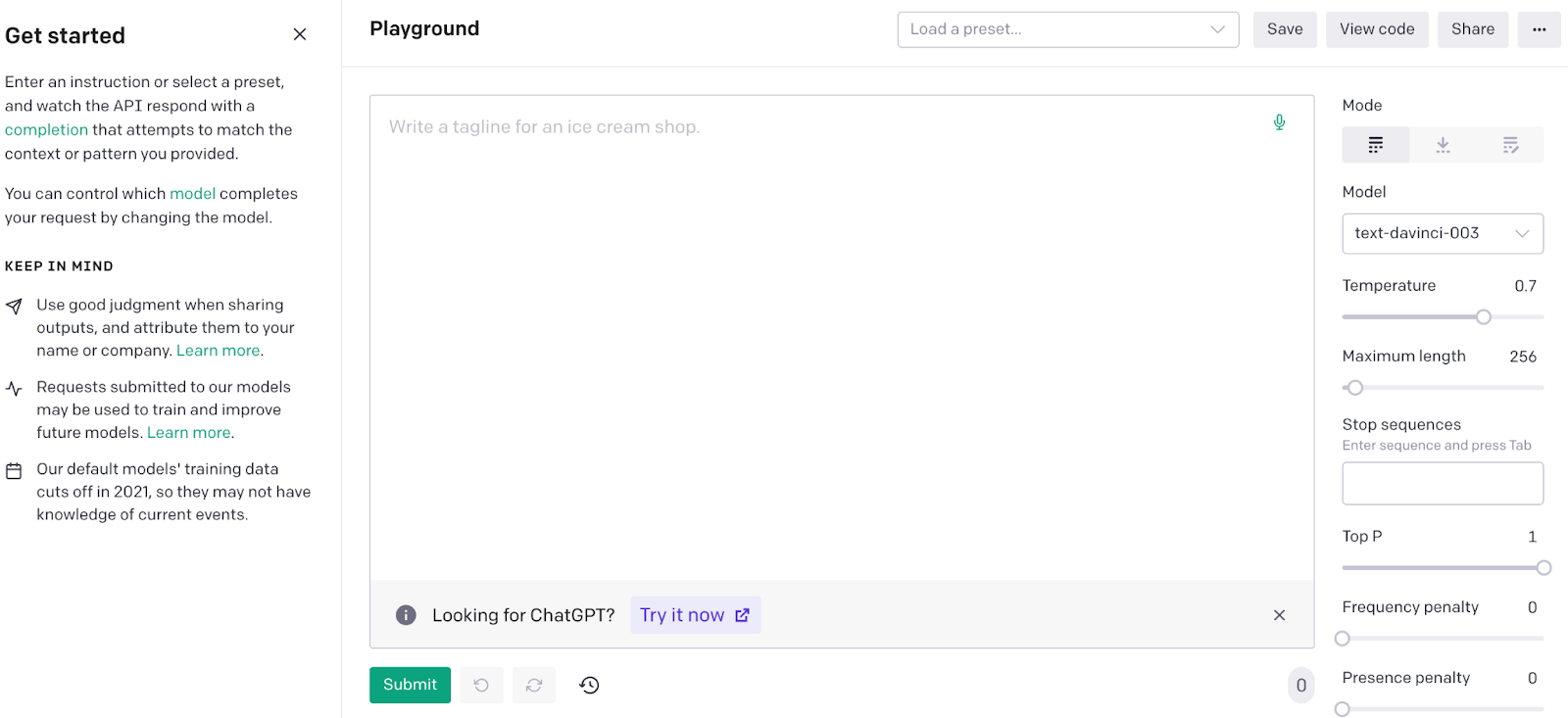
The OpenAI playground gives users access to a wide range of OpenAI's large language models, including the latest GPT-4 and GPT-3.5 series. This allows for experimentation with conversational AI, text completion, summarization, and other advanced NLP tasks.
Users can tweak a wide variety of parameters, including temperature, maximum length, stop sequences, and penalty settings. It's important to be aware of OpenAI's data usage policies, as submitted content may be used for model improvements unless you are on a business plan with a zero data retention policy. While current models like GPT-4 have more recent knowledge cutoffs (e.g., April 2023), they may still lack understanding of very recent or real-time events.
Of course, OpenAI is also behind ChatGPT as well.
AssemblyAI Playground
Speech-to-text and Speech Understanding models to power world-class products
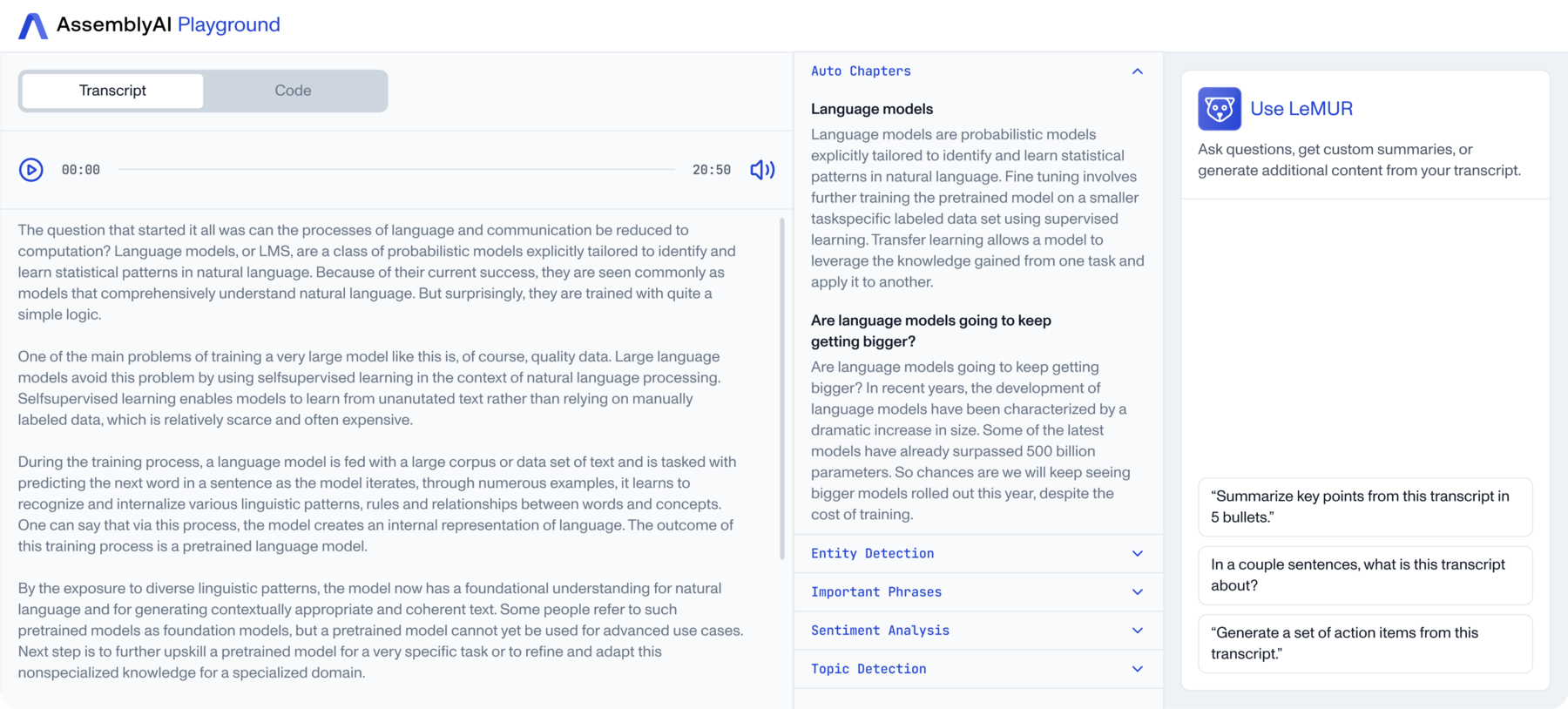
AssemblyAI provides industry-leading speech-to-text and speech understanding models for reliable source-truth data that power world-class products.
AssemblyAI's AI playground lets users play around with these AI models by uploading an audio or video file, or using one of the sample files. Then, users can choose to toggle on/off the following AI models and features:
- Transcription
- Summarization
- Topic Detection
- Auto Chapters
- Content Moderation
- Key Phrases
- Sentiment Analysis
- Entity Detection
- PII Redaction
- Speaker Labels
- Profanity Filtering
And more.
Users can also play around with AssemblyAI's LLM Gateway to use LLMs to search, summarize, ask questions, and generate new text, with knowledge of all your application's spoken data.
Once the results are generated, users can choose to share their results with others, have the playground read back the transcription while the corresponding text is highlighted, or to test the AI models with another YouTube link or audio and video file.
New AI models are also released regularly.
Play around with AssemblyAI's AI playground for free here
NVIDIA AI Playground
Artificial Intelligence computing

NVIDIA's AI playground provides developers with hands-on access to NVIDIA's latest generative AI models and tools. Instead of a single interface, it's a portal to experiment with various models that can be run in-browser or customized via APIs. Key offerings include:
- NVIDIA Foundation Models: Explore and test state-of-the-art models for language, image generation, and more, such as the Llama 3 and Nemotron series.
- Image Generation: Experiment with models like Stable Diffusion for text-to-image and image-to-image tasks.
- Code Generation: Use models like Code Llama to generate code from natural language prompts.
- NVIDIA NeMo: Access a framework for building, customizing, and deploying generative AI models for speech and language applications.
- Customization and Deployment: The playground serves as an entry point to NVIDIA's broader AI ecosystem, allowing developers to test models before integrating them into applications using tools like NVIDIA NIM for optimized inference.
HuggingFace Spaces
AI community
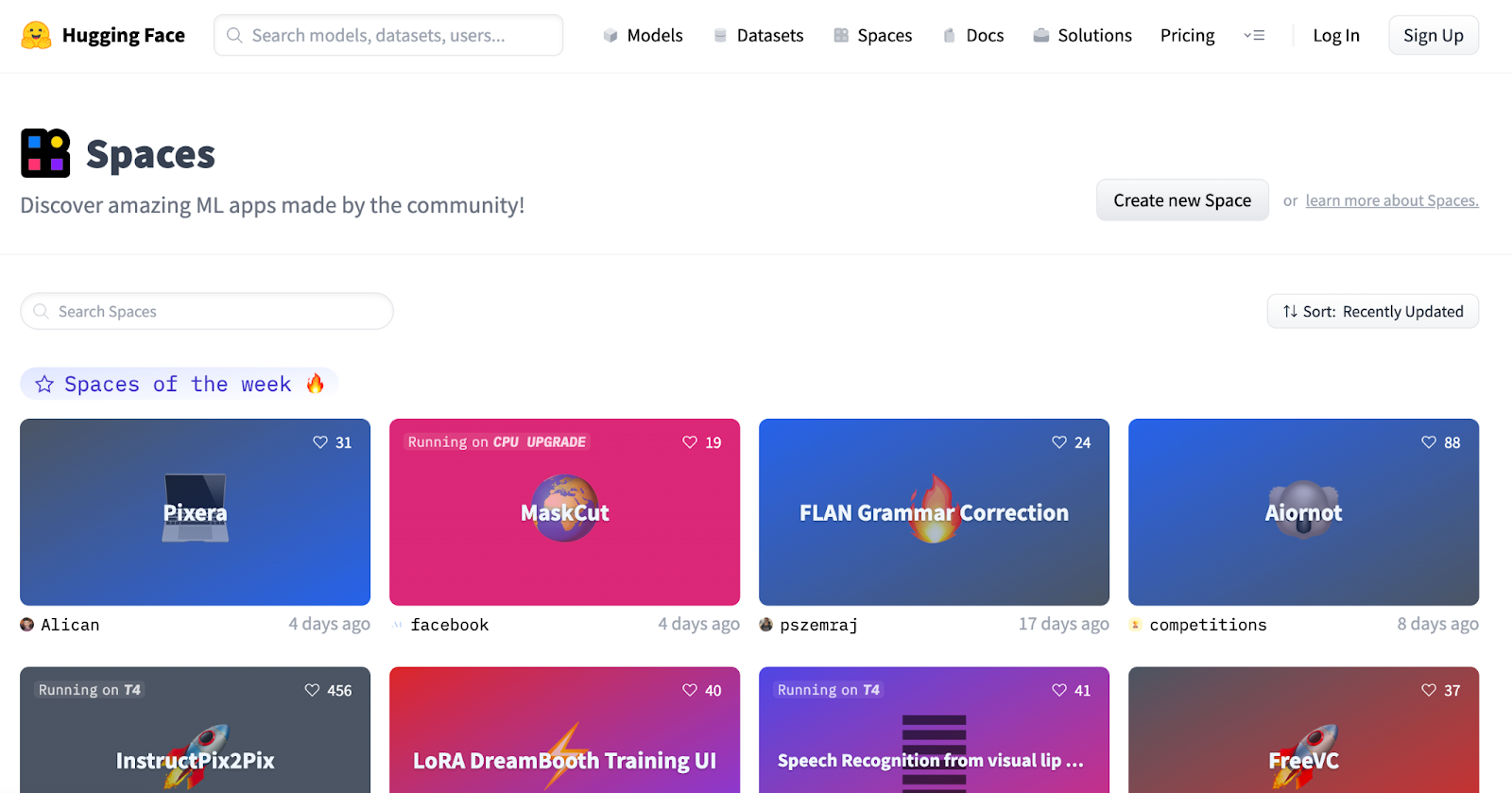
While not a typical AI playground, HuggingFace Spaces lets users discover and run thousands of machine learning apps created by the AI community. Users can try demos of various open-source models for tasks like Large Language Model (LLM) chat, text-to-image generation (e.g., Stable Diffusion variants), voice cloning, and video generation directly in their browser.
Most of the demo apps are implemented with Gradio, an open-source library for building easy-to-use applications using only Python.
How to choose the right AI playground
With numerous AI playgrounds available, selecting the right one depends on understanding your specific objectives and matching them with platform capabilities. Here's a framework to guide your decision.
Domain and use case alignment
Match the playground's strengths to your intended application:
- Voice data: AssemblyAI's Speech AI playground for transcription, call analysis, and voice features
- Text generation: OpenAI's playground for chatbots and creative content
- Visual content: NVIDIA's tools for 3D rendering and artistic AI
Path to production
Consider your end goal when choosing a playground:
- Exploration only: Any playground works for learning and experimentation
- Building products: Choose playgrounds backed by robust production APIs
- Performance consistency: Look for platforms where playground models match API models
AssemblyAI's playground uses identical models to their production API, ensuring consistent results from testing to implementation.
Feature depth and customization
Evaluate the specific capabilities each playground exposes. Basic playgrounds might only show simple input-output relationships, while advanced platforms let you toggle multiple features and adjust parameters. For Speech AI work, you might need:
- Speaker diarization to identify who's talking when
- Sentiment analysis to understand emotional tone
- Entity detection to extract key information
- Keyterm Prompting (Custom Vocabulary) for industry-specific terms
The ability to test these features together, not just individually, helps you understand how they'll work in your complete solution.
Data privacy and security considerations
Understanding how your data is handled matters, especially when testing with sensitive information. Review each platform's data usage policies carefully.
For production evaluation, prioritize platforms from companies that offer enterprise-grade security for their API services, as this indicates mature data handling practices.
Getting started with AI playgrounds
The best way to understand AI capabilities is through hands-on experimentation. Here's a practical approach to get the most value from AI playgrounds, whether you're validating a specific use case or exploring what's possible.
Start with sample data
Every quality AI playground provides sample files or prompts. These aren't just demos—they're carefully chosen to showcase the platform's core capabilities and common use cases. Start here to establish a baseline understanding. In AssemblyAI's playground, for example, sample audio files demonstrate transcription accuracy across different accents, background noise levels, and speaking styles.
Test with your own data
Once you understand the baseline capabilities, the real learning begins when you upload your own content. This is where you discover whether an AI model can actually solve your specific problem. Upload that challenging customer service call with background noise.
For meaningful testing, choose representative samples that include:
- Your most common use cases
- Edge cases that might break the system
- Different quality levels you expect to encounter
- Various formats and configurations
Experiment with parameters and features
Modern AI playgrounds expose various parameters and features that significantly impact results. Don't just run your data through once. Experiment with different settings to understand their effects.
In speech-to-text playgrounds, try enabling speaker diarization to see how well it separates multiple voices. Toggle sentiment analysis to gauge emotional understanding. Test PII redaction to see how it protects sensitive information.
This experimentation phase reveals not just what's possible, but what combination of features delivers the best results for your use case. Document what works and what doesn't—these insights become your implementation requirements.
Compare across platforms
Different AI models excel at different tasks. A language model that's exceptional at creative writing might struggle with technical documentation. A speech recognition model trained on American English might falter with international accents.
Use multiple playgrounds to compare performance on your specific data. This comparative testing helps you make informed decisions about which technology to build upon.
From playground to production
Once you've validated that an AI model meets your needs, the transition from playground to production should be straightforward. Look for clear documentation, code examples, and API references. The best platforms make this transition seamless—what you tested in the playground works identically through the API.
Consider starting with a proof of concept using the API's free tier. This lets you validate integration complexity and performance at a small scale before committing to larger implementations. You can try our API for free to start building with the same Speech AI models you've tested in the playground.
Frequently asked questions about AI playgrounds
What is an AI playground?
An AI playground is an interactive web platform that lets you test AI models directly in your browser without coding. These platforms provide visual interfaces for uploading data and seeing real-time AI outputs.
Are AI playgrounds free to use?
Many AI playgrounds offer free tiers for testing, including AssemblyAI's playground. Paid plans typically provide higher volume usage and advanced features.
Do I need to know how to code to use an AI playground?
No, AI playgrounds use visual interfaces that require no programming knowledge. However, integrating AI models into your applications does require coding skills.
Can I use content from an AI playground for commercial projects?
This depends on each platform's terms of service—some allow commercial use while others are for evaluation only. Always review the licensing terms before using playground content commercially.
What's the difference between an AI playground and an API?
A playground is a no-code testing interface, while an API is the programming interface for building applications. Playgrounds help you test what's possible; APIs let you build those capabilities into products.
Lorem ipsum dolor sit amet, consectetur adipiscing elit, sed do eiusmod tempor incididunt ut labore et dolore magna aliqua. Ut enim ad minim veniam, quis nostrud exercitation ullamco laboris nisi ut aliquip ex ea commodo consequat. Duis aute irure dolor in reprehenderit in voluptate velit esse cillum dolore eu fugiat nulla pariatur.

